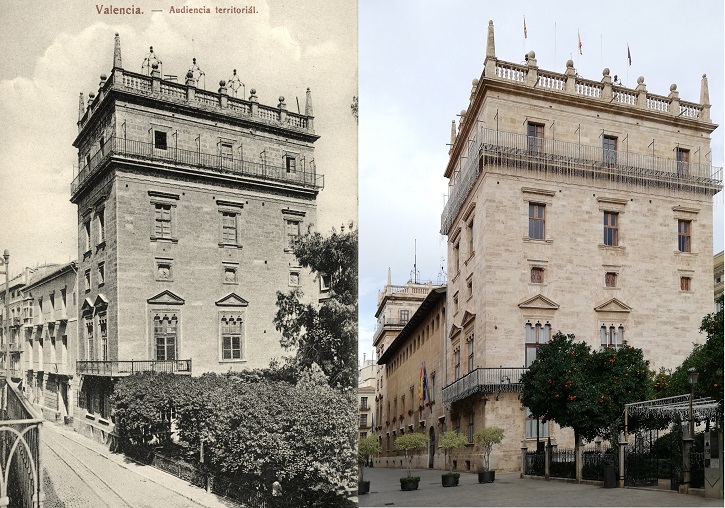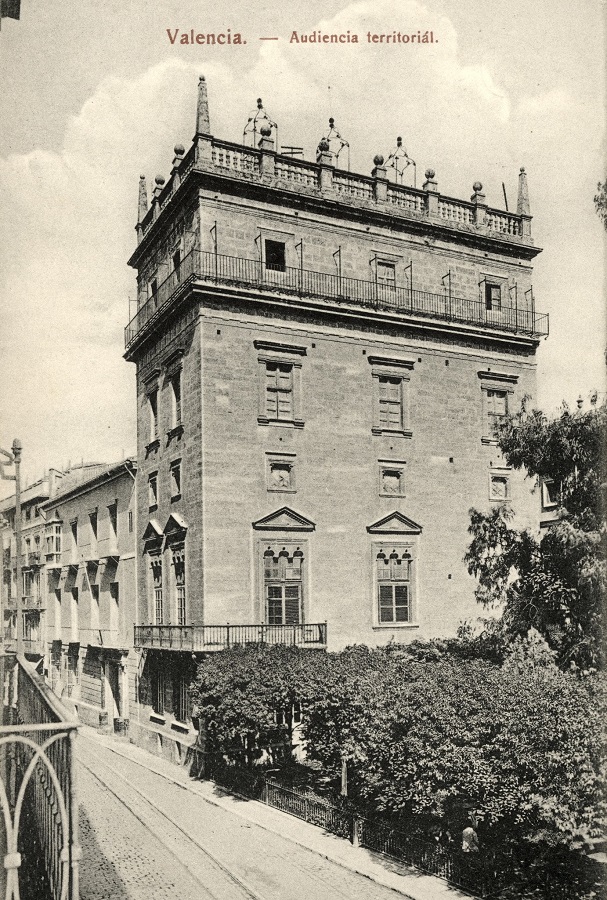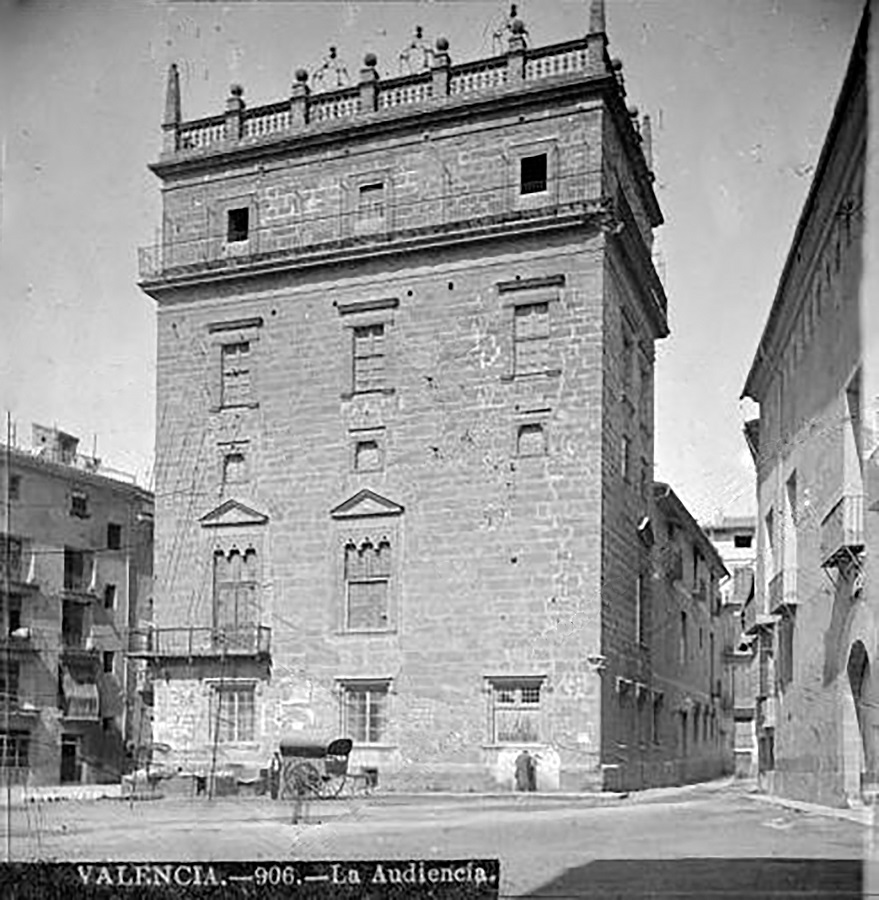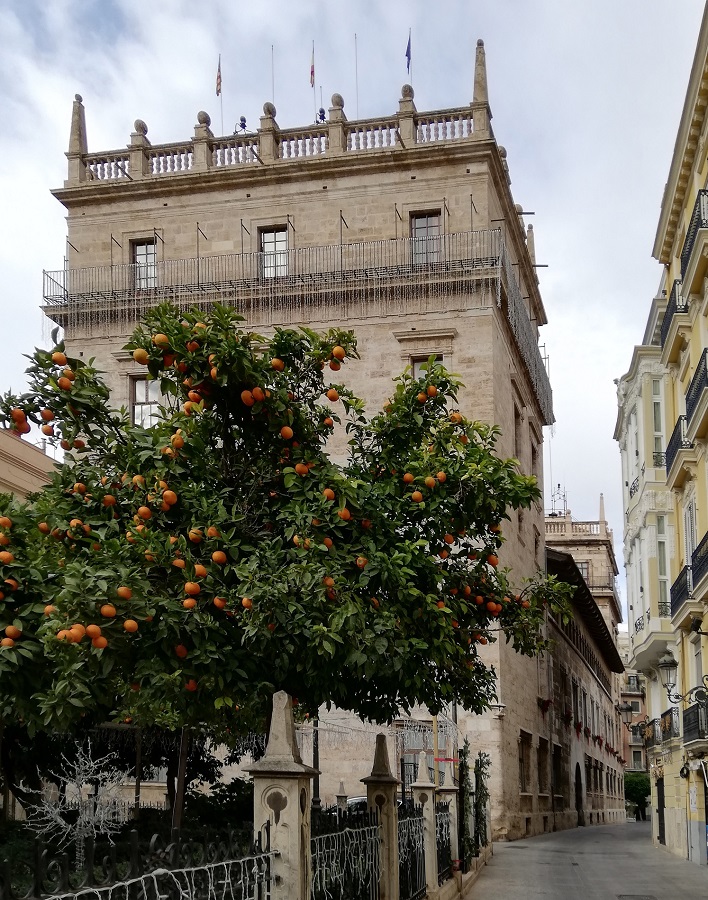A study considers Martínez Aloy as the intellectual author of the second tower of the Palau de la Generalitat
- Scientific Culture and Innovation Unit
- December 27th, 2021

The Professor of Art History at the Faculty of Geography and History Adrià Besó has reviewed the history of the Palau de la Generalitat from the abolition of the charters by Philip V to the promulgation of the Statute of Autonomy. In a recently published article, he analyses the influence of the politician and historian José Martínez Aloy, linked to the Valencian Renaissance, who speaks for the first time about the second tower of the historic building, which was built in the 1950s.
The Palau de la Generalitat tower that is adjacent to the Manises Square was built during the restoration of the building that took place between 1924 and 1952. In 1944, the architect in charge of the works, Luis Albert, proposed adding it as an extension due to lack of space. For this reason, he is usually considered its author. However, in 1909, the historian José Martínez Aloy published the book La casa de la Diputación, in which he stated that, at the time of the construction of the first tower in 1518, the deputies had already weighed the idea of building the second one. Later, he refers to an agreement of 1580 by which, once the works had been completed, the purchase of the remaining houses on the block was proposed to build a new tower, which was never built.
But, as Besó indicates, “after subsequent investigations, it is very unlikely that the historian found any vestige of this second tower in any of the documents that he consulted for his work” and the affirmations of Martínez Aloy have not been supported by source documents, neither at the time of publication of his work nor in subsequent studies. For this reason, the tower that overlooks the Manises Square was first proposed by the historian as an ideal, dreamed-of image of the palace, conceived in the cultural context of the Renaissance.
This movement wanted to recover the hallmarks of the Kingdom of Valencia, lost after the Battle of Almansa, in which the outstanding buildings of the Valencia of the charters were valued such as the Cathedral, the Santo Domingo Convent, the Serranos and Quart towers, the Silk Exchange and the Palace of the Generalitat itself, which acquired greater relevance after the demolition of the Royal Palace in 1810 as it became the monument most directly related to the past of the charters era.
The restoration is part of this process of recovering the glorious past. The predominant current of restoration in Spain at the beginning of the twentieth century advocated recovering the original image of the buildings, and even considered completing those parts that had not been carried out at the time of their construction. For this reason, the idea of the incomplete building outlined in 1909 by Martínez Aloy, served in 1944 as a theoretical basis or idea for Luis Albert to materialise his architectural expansion project based on the construction of a new tower with which the dream building proposed by Martinez Aloy was completed.
Photo captions (annex):
1. Valencia. Regional Court. José Durá Pérez (ed.). Nicolau PrimitiuValencian Library. José Huguet fund. Valencia.
2. Valencia. The High Court. J. Laurent. 1863-1880. Ruiz Venacci archive. IPCE. Ministry of Culture and Sports. Madrid.
3 y 4.- Palace of the Valencian Government nowadays. Photos: Adrià Besó.
File in: Investigació a la UV , Publicacions , Producció científica , Facultat de Geografia i Història , Difusió i comunicació científica , Internacionalització recerca , Recerca, innovació i transferència






















